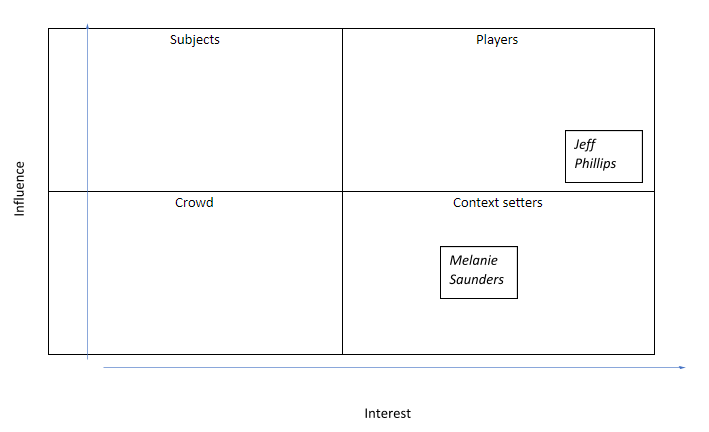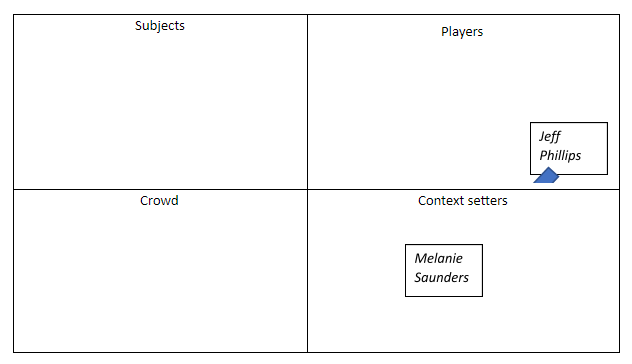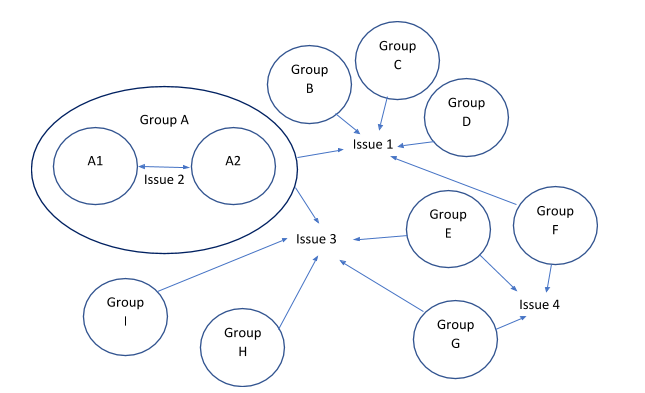Make the best out of your project stakeholders
Introduction
Project stakeholders are like ants in a colony. Ant colonies are like superorganisms in which queens produce workers to meet their and their siblings’ needs.
Queens tend to produce 25% fewer workers when sharing a colony with other queens. Workers easily spot selfish queens. The less fertile she is, the weaker her chemical cues, and the more likely she’ll be taken out. And as workers are almost always infertile, that typically means the end of the colony.
So stakeholders, like worker ants, can help you build a robust superorganism, or bring it all crashing down. The determining factor is how well you understand and fulfill their needs.
In fact, underdelivering for stakeholders (those who can impact or be impacted by your project) is a leading cause of project failure.
1. Only 55% of team leaders and project managers feel project objectives are clear.
2. More than 80% feel the requirements process doesn't articulate business needs.
3. Just 23% say project managers and stakeholders are aligned once the project comes to an end.
Source: Geneca.
In this article, we’ll show you how to win over those who matter by walking you through six surefire stakeholder analysis techniques, with a stakeholder analysis example for each.
| You may also like: 6 Best PMI Certifications you should consider in 2020 |
Stakeholder Analysis Technique List
Technique 1: Basic Stakeholder Matrix
WHY
Quickly assess stakeholder sentiment at kick-off or at any point in the project lifecycle.
HOW
- Identify stakeholders. These are those that can impact, or be impacted by, your project.
- Prepare a flip chart sheet for each listed stakeholder, placing their name at the top.
- Next to their name, draw one, two, or three stars based on their level of influence in the organization. The more stars, the more influential.
- After the stars, draw an empty circle, a half-moon, or a full circle, denoting their level of interest.
- Under the stakeholder’s name, list three keywords of what you believe the organization relies on from the stakeholder.
- Create a narrow column down the right side of each sheet. Leave it blank.
- Under each stakeholder’s name, list their expectations, and any criteria they might use to gauge performance.
- Extrapolate how you’d expect the stakeholder to view performance on each line item, from their point of view. In the narrow column, denote whether their judgment would be good (green), fair (yellow), or poor (red).
- At the bottom of the sheet, note three potential quick wins that would help get the stakeholder onside.
- Once finished with all the sheets, roll the findings up into a stakeholder matrix.
- Color code stakeholder issues, identifying which are individual, and which are overarching.
- Rank each stakeholder according to their influence rating, and what needs they fulfill for the organization. Consider the stakeholder's power, legitimacy, and attention-getting capacity.

WHAT
Know how stakeholders feel your project is doing against their expectations.
Source: Adapted from Mitchell et a1. 1997.
| You may also like: The ultimate guide to 9 essential documents for your project |
Technique 2: Power vs. Interest Grid
WHY
Stakeholders may block or promote your project; they may care about what you’re doing, or not. Prioritizing stakeholders to engage will help you see where to get the greatest bang for your buck.
HOW
- Tape four flip chart sheets to a wall to form a single surface two sheets high and two sheets wide.
- Draw X and Y axes. Labeling X interest (from low to high), and Y (also low to high.)
- With the team, write stakeholder names on sticky notes (one per sticky.) If you’ve used the Basic Stakeholder Matrix, you can pull the names from that.
- Name someone as the facilitator, and have the team guide them on where to attach each sticky on the grid. They should collect one label per team member until all labels are on the grid.
- Keep moving labels until everyone on the team agrees the relative positioning is right.
- Discuss the stakeholder placement implications with the team.

WHAT
Know who has high or low power to impact your project, so you can classify who to manage closely, who to keep satisfied, who to keep informed, and who to simply monitor.
| You may also like: Project Deliverables: What are they and why are they important? |
Technique 3: Stakeholder Influence Diagram
WHY
Identify how stakeholders influence each other.
HOW
- Develop the power and interest grid from Technique 2 above.
- For each stakeholder on the grid, suggest lines of influence from one stakeholder to another. Draw in the lines with a soft lead pencil. Two-way influences are possible, but an attempt should be made to identify the primary direction in which influence flows between stakeholders.
- Engage in a dialogue about which influence relationships exist, which are most important and what the primary direction of influence is. Once the final agreement is reached the pencil lines should be made permanent with a marking pen.
- The results and implications of the resulting diagram should be discussed, including identifying who the most influential or central stakeholders are.

WHAT
Know which stakeholders are the most influential and would be of the greatest value to leverage in getting others on board.
Source: Eden and Ackermann (1998: 349-50; see also Finn 1995, and Bryson et al. 2002.)
| You may also like: 8 Common Types of Organizational Structures in Project Management |
Technique 4: Strategic Intervention Ideation
WHY
Clearly understand which stakeholders to leverage in formulating problems, searching for solutions, and qualifying political ramifications.
HOW
- Recreate the table below.
- List appropriate strategic management activities for your project.
- For each activity, brainstorm which stakeholders should be informed, consulted, involved, engaged to collaborate, or empowered.

WHAT
Know what problems you’re facing, and how to leverage stakeholders in solving them.
Source: Adapted from http://www.iaps.org/practitionertoois/spectrum.html and Bryson’s (1995) Strategy Change Cycle.
| You may also like: Roles, responsibilities, and skills in Program Management |
Technique 5: Stakeholder Issue Interrelationship Mapping
WHY
This stakeholder mapping technique helps show who has an interest in different issues, and how they may be related to other stakeholders through their relationships with the issues.
HOW
- Start with power versus interest grid and stakeholder influence diagram, and perhaps with the basic stakeholder matrix.
- Tape four flip chart sheets to a wall to find a single surface two sheets high and two sheets wide.
- Have the team write stakeholder names on sticky notes, one per sticky note, taking names from one of the previous analyses.
- Have the team then brainstorm issues that appear to be present or on the horizon and write them on different colored sticky notes.
- Place issues on the flip chart surface, and stakeholders around them.
- Stakeholders may touch multiple issues. Draw arrows indicating which stakeholders have a stake in which issues and label each arrow, identifying the stake or interest. An arrow on the diagram indicates that a stakeholder has an interest in an issue. The specific interest will vary stakeholder to stakeholder and may be in conflict. So labeling is critical.
- Thoroughly discuss each issue, stakeholder, and arrow. Note implications for issue framing or reframing, and stakeholder relationship management.

In the stakeholder mapping above, stakeholders A, B, C, D, and F, all have an interest, or stake, in Issue 1. Subgroups of stakeholder A have a further issue between them, Issue 2. Stakeholder A is also related to stakeholder E through their joint relationship to Issue 3, and to the other stakeholders on the map through their connection with Issue 3.
WHAT
Know actual and potential problem areas, with potential for cooperation or conflict pinpointed.
Source: Bryant 2003: 196, 264.
| You may also like: 10 Essential Skills of a Project Manager: What are they and why are they important? |
Technique 6: Ethical Analysis
WHY
Safeguard your organization’s longevity by operating with honesty, transparency, and accuracy, and understand how your project must operate to meet each stakeholder’s ethical requirements.
HOW
- Recreate the table below.
- Gather ethics, an advisory group.
- Set ground rules that all discussions must focus on pursuing the common good and avoiding doing harm.
- Determine what ethical factors are most relevant in your project, both deontological (rightness or wrongness vs. consequences), and teleological (an end goal that is good or desirable.) Results should indicate which options to veto because of ethical considerations.
- Fill out one grid per key stakeholder, as a team.
- Discuss the results, determining who else should be pulled into the conversation.

WHAT
Know how your activities impact key stakeholders, including customers, communities, business associates, employees, and the government.
Source: Adapted from Lewis 1991: 122.
Stakeholder Analysis Importance
So, what is stakeholder analysis? It’s a means of assessing potential changes as they relate to those who impact or are impacted by them. And a guide to considering stakeholder perspectives at every project juncture.
And how will stakeholder analysis benefit you?
Find the most influential stakeholders early on and empower them to help structure your project. Secure their buy-in, and they’ll become your project’s greatest ambassadors. Winning them over also unlocks access to more resources – enabling your project to have an even greater effect.
Communicate early and often with targeted stakeholder communications, help them understand where you stand and how they can pitch in. Leverage your executive sponsors wherever possible.
Forecast how stakeholder groups will react to project changes to understand how best to frame transitions to keep stakeholders bought in.
| You may also like: Program Manager and Project Manager: How are they different |
Conclusion
Stakeholder analysis is the equivalent of the queen understanding and fulfilling her workers’ needs, so the colony can thrive. It helps her understand who can impact, or be impacted by, her, and to what extent each worker can influence the colony. It helps her understand how well she’s doing at meeting needs, and where there are any red flag areas to get ahead of. It also helps eliminate roadblocks to winning worker support by classifying supporters, opponents, and their levels of importance. Even when she can’t fulfill a worker’s interests, knowing that those interests exist, and how to effectively engage with the worker can make the difference between life and death.
In a world where backstage politics often undermine project progression, stakeholder analysis engenders perspectives and metrics that can help you and your team sidestep barriers.
Now it’s your turn. Which of these techniques will you implement today to help safeguard your projects?
Upskill your career. Get PMP Certified
